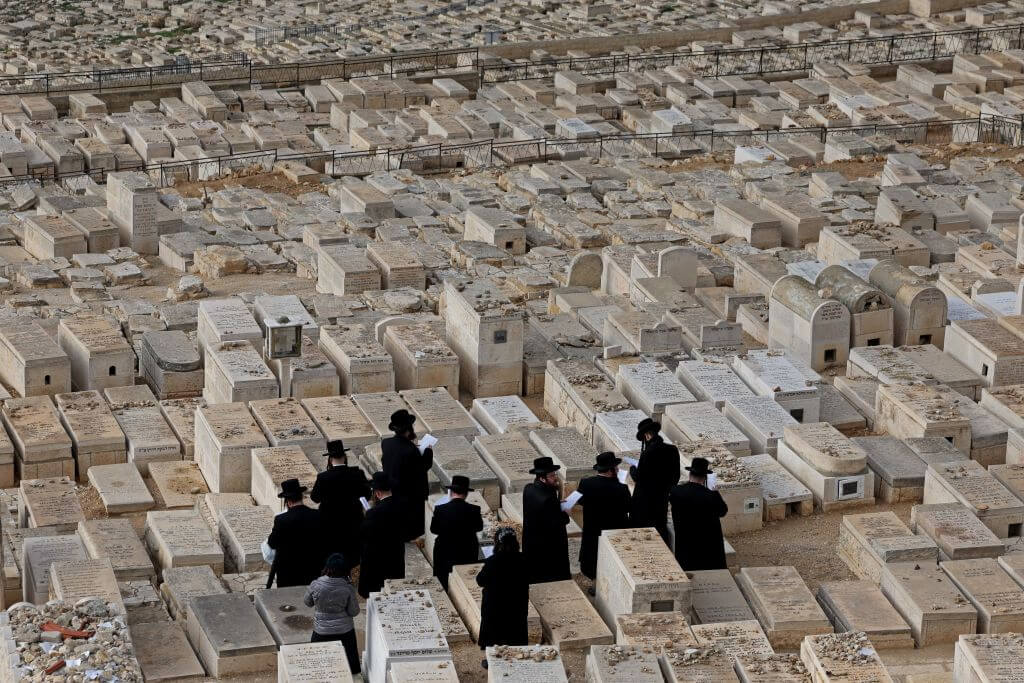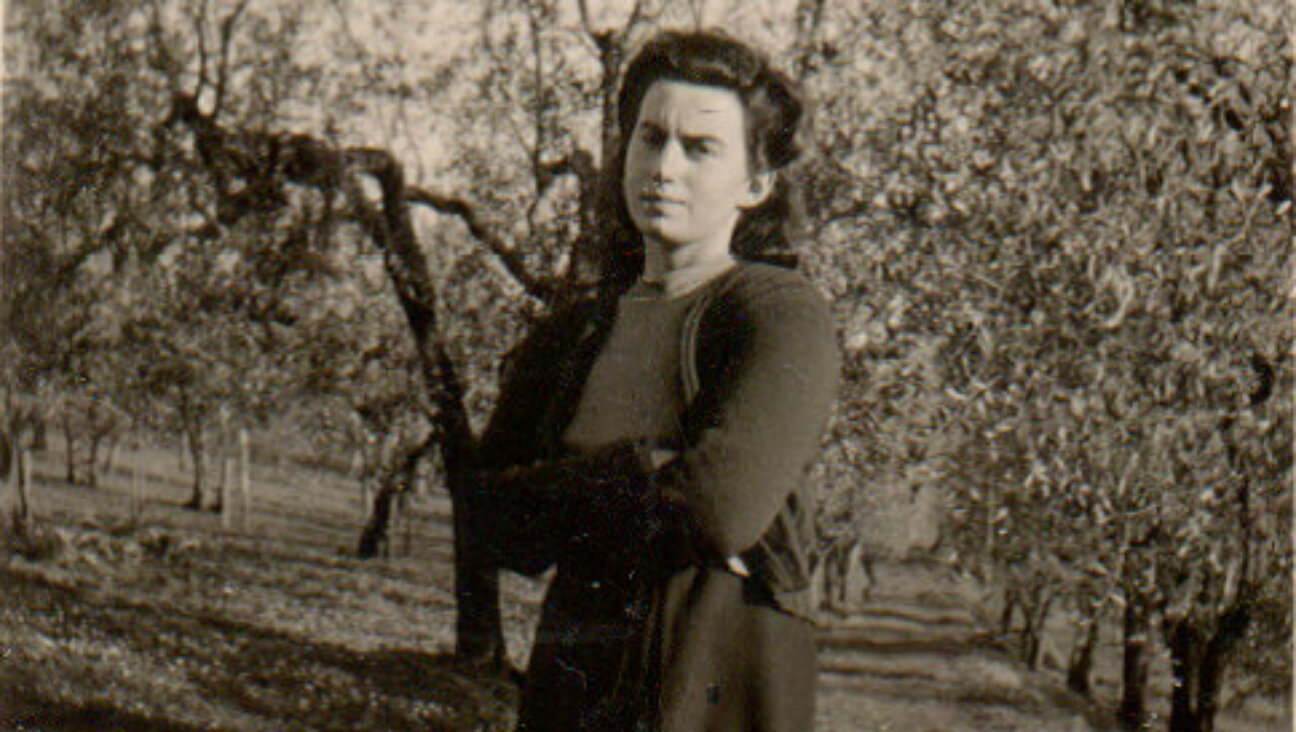Shalom, Wall: Jewish Artists Go Graffiti
The graffiti art on display at the Sunshine Factory café on Manhattan’s Lower East Side has the bold and gritty feel of New York’s streets. On one canvas, gold lettering floats above a field of green paint speckled with white and purple. In a drawing on the opposite wall, a break-dancer’s tracksuit and gold chains are intricately rendered in blue ink. And more than one work features “the pigs” — street art’s universal symbol for the police and anything else that smells of the establishment.
Amid this explosion of color and symbolism, one work stands out. Its flame-colored letters are typical graffiti, but the sprawl turns out to spell the word Shalom, which is also printed carefully in Hebrew along the top and in an English banner at the bottom.
The work is the product of Dani Reyes Mozeson, a 24-year-old from Teaneck, N.J., who is one of three Jewish artists featured. Also included are Jonathan Cohen, aka “Meres,” who directs a graffiti mecca in Long Island City, N.Y., called “5 Pointz,” and Elliot Bassman, who more typically paints biblically themed murals.
The artists — all professionally trained; Mozeson and Cohen at the Fashion Institute of Technology — are part of a recent movement to rescue graffiti from illegal infamy and bring it to the world of galleries and museums. And while embracing both Jewish culture and street art may seem even more unusual, their exhibit is titled “Breaking Boundaries” and conscientiously draws from a diversity of ethnic and artistic backgrounds.
The theme of crossing boundaries is a familiar one for Mozeson, who was born in El Salvador and adopted by Jews. With his baggy T-shirt and backward baseball cap, he is clearly at home in New York’s graffiti scene, but at the same time, his gold chains are adorned by Hebrew letters spelling out Chai and by the hamesh hand, which offers magical protection from the envious. His “black book” — the sketchbook-cum-scrapbook kept by most street artists — includes photographs of his last trip to Israel.
Mozeson credits his mother, Lois Stavsky, for helping him appreciate difference and diversity. In fact, Stavsky, a retired teacher and the manager of a nonprofit gallery in Seward Park High School, was the one who organized Sunshine’s exhibit as a way to “represent people of different cultures.”
“I cross many different worlds,” Stavsky explained in an interview with the Forward. The self-described “left-wing Zionist” recalled how, in the early 1980s, she and her husband could not adopt an African-American child because at that time, agencies only placed children with parents ethnically similar to them.
According to Mozeson, who also has a sister adopted from Hong Kong, his mother has been charging across cultures ever since. She was the one who first introduced him to graffiti, which she encountered as a teacher in New York’s South Bronx during the dawn of the hip-hop era.
“She had a show in her school, and she had some of the kids do graffiti on some of the lockers,” Mozeson said, grinning. “I mean, who does that?”
For his part, Mozeson acknowledged that living with a multifaceted identity can be difficult. The Jewish community of Teaneck, where he lives, often assumes he is an outsider. Likewise, his colleagues in the art world sometimes fail to understand his Jewishness. “A lot of people question me about that,” he said. “I’m like, ‘Is being Jewish really a thing to lie about? Who would make that up?’”
In the end, even an art show about tolerance couldn’t get off the ground without a touch of controversy. In order to extend the show’s reach, Stavsky invited the participation of Bassman, whose work has graced the New York headquarters of the Union of American Hebrew Congregations and the Synagogue for the Arts. But his contribution — a canvas that bore the names of the Jewish patriarchs in colorful block lettering — was dismissed by some of the artists as ill suited for a “graffiti-inspired” show.
“I realized there was a cultural gap,” Stavsky said. “But I have no problem with cultural gaps. That’s the nature of the world.”
Bassman, too, has no regrets. He compared the process of mounting the show to attending a recent conference on antisemitism held by the United Nations. “There’s always some tension… when you cross boundaries,” he said. “We need to do it in small settings so that it sparks in bigger things.”
Jennifer Siegel is a writer living in New York.
The Forward is free to read, but it isn’t free to produce
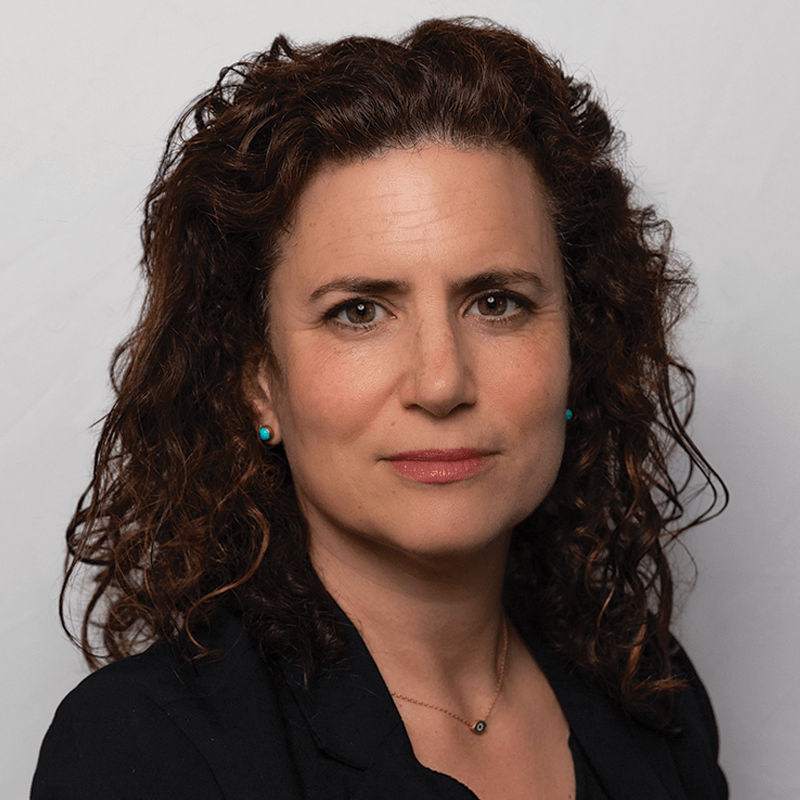
I hope you appreciated this article. Before you go, I’d like to ask you to please support the Forward.
Now more than ever, American Jews need independent news they can trust, with reporting driven by truth, not ideology. We serve you, not any ideological agenda.
At a time when other newsrooms are closing or cutting back, the Forward has removed its paywall and invested additional resources to report on the ground from Israel and around the U.S. on the impact of the war, rising antisemitism and polarized discourse.
This is a great time to support independent Jewish journalism you rely on. Make a gift today!
— Rachel Fishman Feddersen, Publisher and CEO
Support our mission to tell the Jewish story fully and fairly.
Most Popular
- 1

Fast Forward Ye debuts ‘Heil Hitler’ music video that includes a sample of a Hitler speech
- 2

Opinion It looks like Israel totally underestimated Trump
- 3
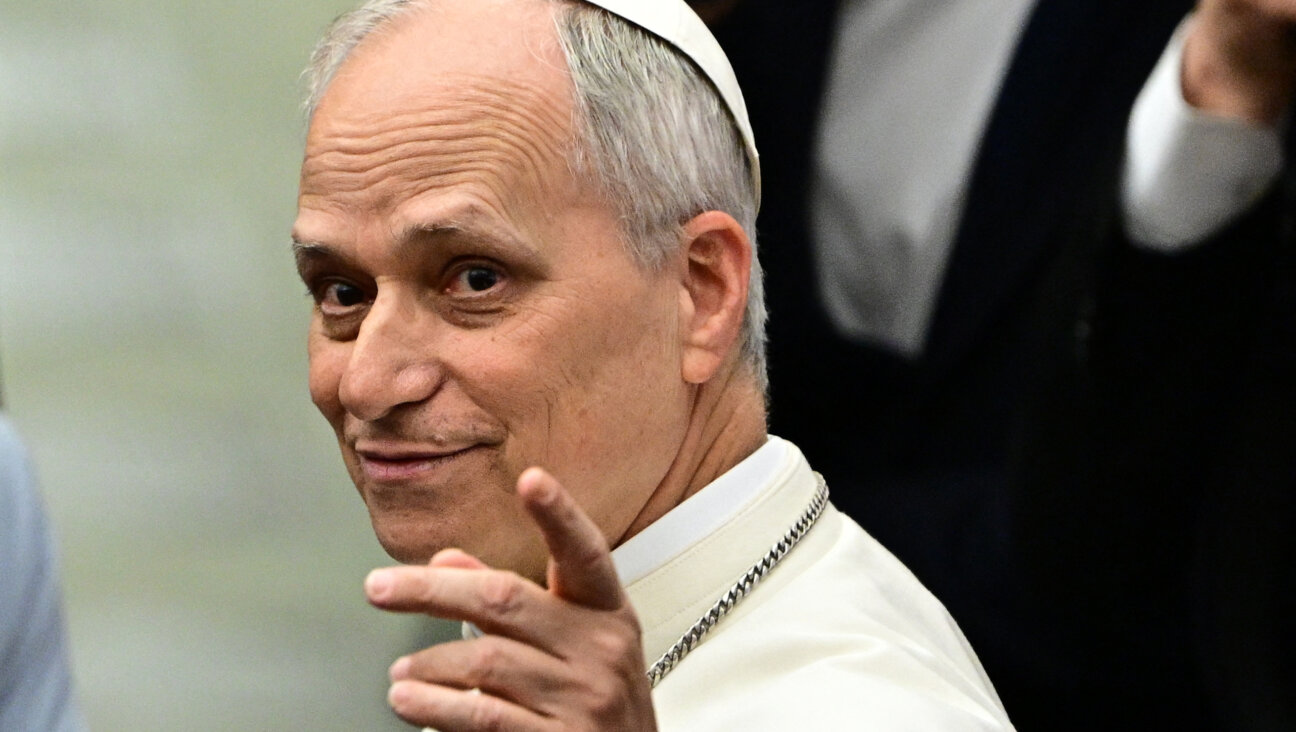
Culture Is Pope Leo Jewish? Ask his distant cousins — like me
- 4
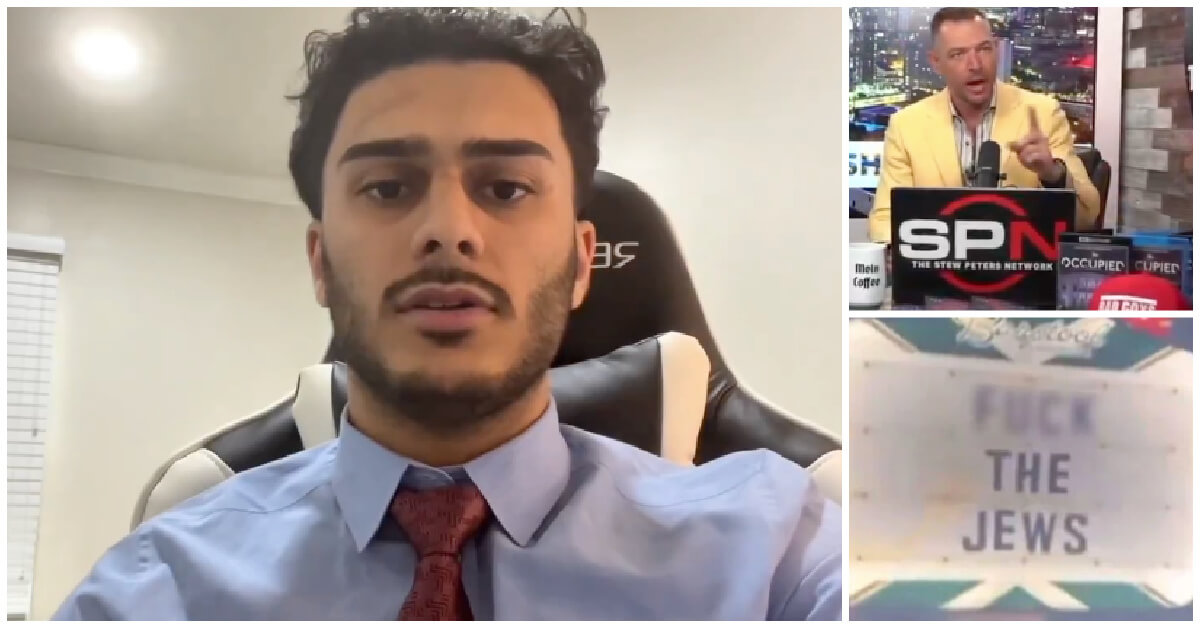
Fast Forward Student suspended for ‘F— the Jews’ video defends himself on antisemitic podcast
In Case You Missed It
-

Fast Forward For the first time since Henry VIII created the role, a Jew will helm Hebrew studies at Cambridge
-
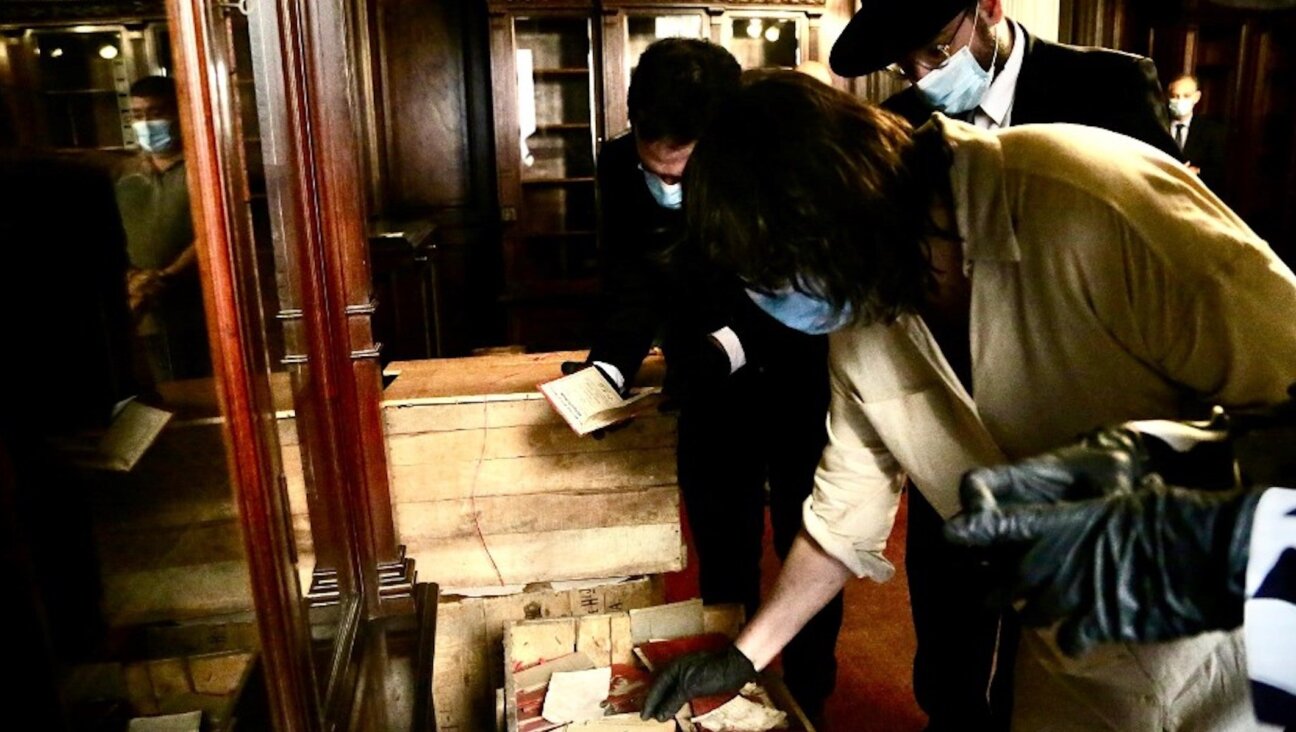
Fast Forward Argentine Supreme Court discovers over 80 boxes of forgotten Nazi documents
-
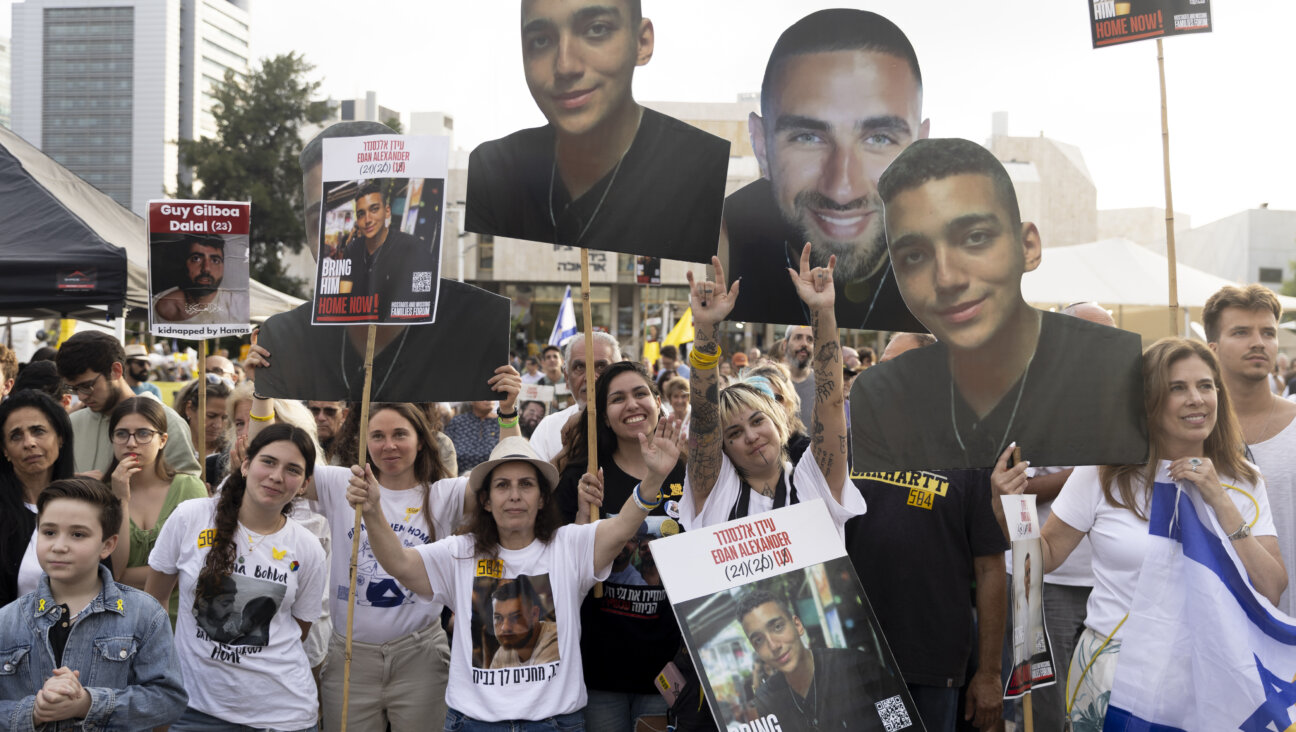
News In Edan Alexander’s hometown in New Jersey, months of fear and anguish give way to joy and relief
-
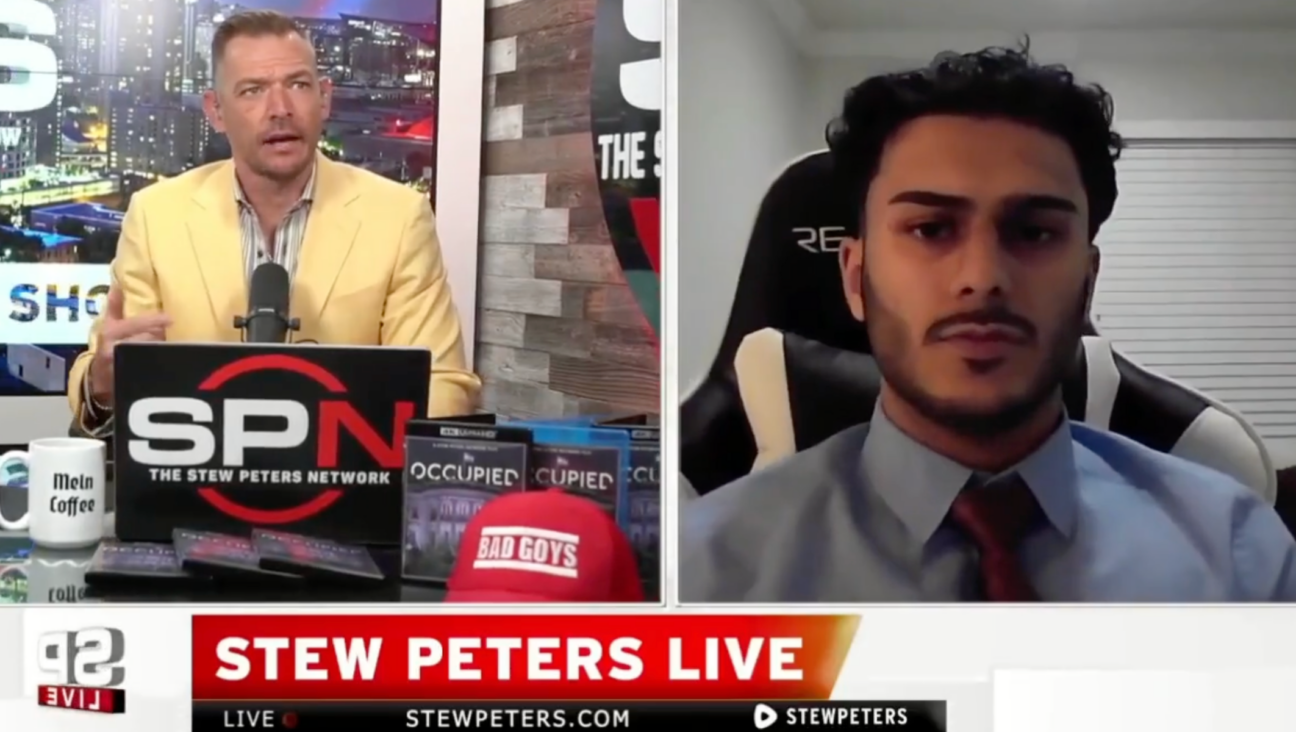
Fast Forward What’s next for suspended student who posted ‘F— the Jews’ video? An alt-right media tour
-
Shop the Forward Store
100% of profits support our journalism
Republish This Story
Please read before republishing
We’re happy to make this story available to republish for free, unless it originated with JTA, Haaretz or another publication (as indicated on the article) and as long as you follow our guidelines.
You must comply with the following:
- Credit the Forward
- Retain our pixel
- Preserve our canonical link in Google search
- Add a noindex tag in Google search
See our full guidelines for more information, and this guide for detail about canonical URLs.
To republish, copy the HTML by clicking on the yellow button to the right; it includes our tracking pixel, all paragraph styles and hyperlinks, the author byline and credit to the Forward. It does not include images; to avoid copyright violations, you must add them manually, following our guidelines. Please email us at [email protected], subject line “republish,” with any questions or to let us know what stories you’re picking up.







